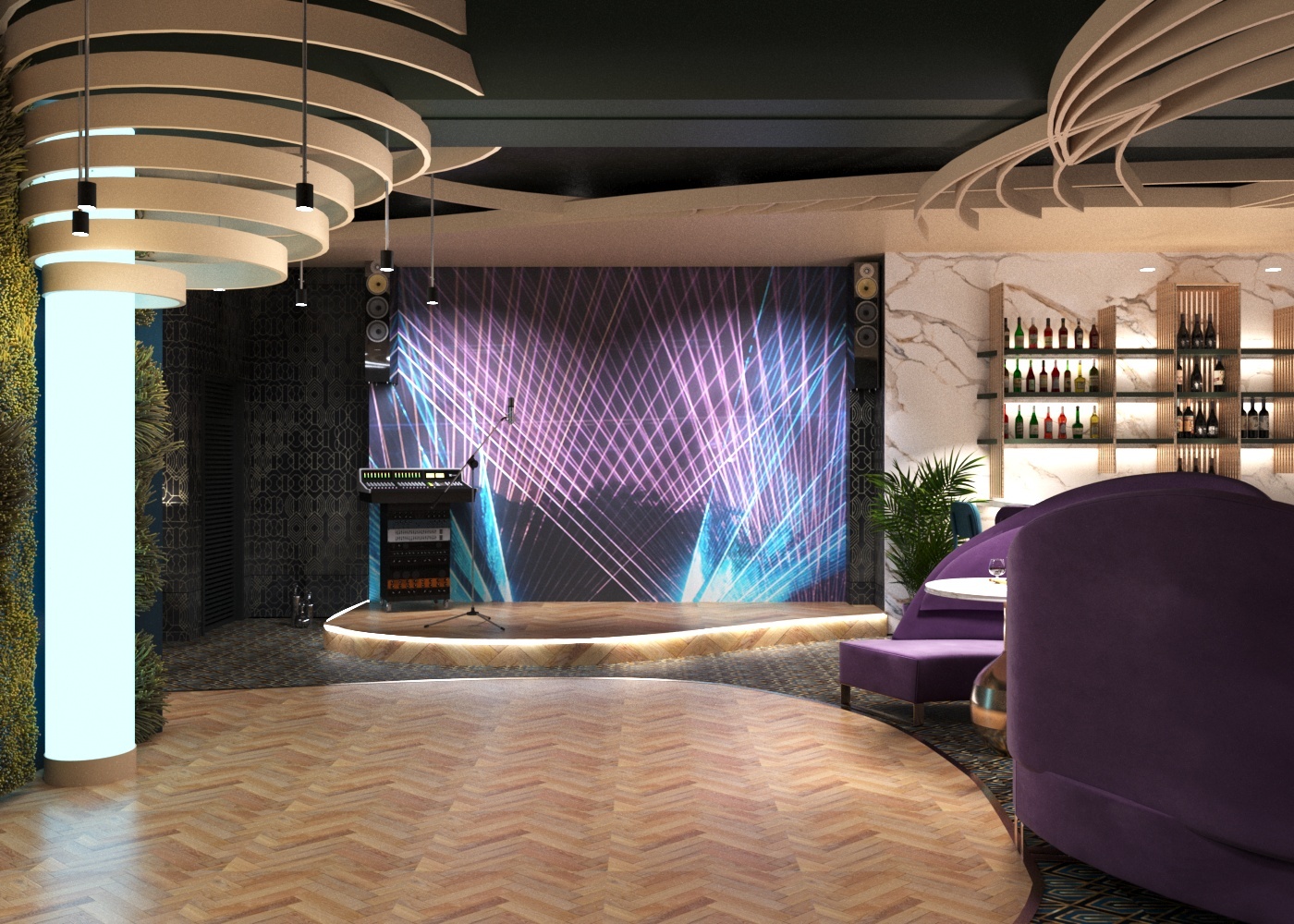Stepping into a restaurant is about more than just the food—it's an experience crafted through thoughtful interior design. Statistics show that 91% of guests say that ambiance significantly impacts their dining experience. Every design choice—textures, lighting, layout—works together to evoke emotions and create a memorable atmosphere.
First Impressions Matter The first impression is crucial. Research indicates that customers form opinions about a restaurant within the first 30 seconds of entering. Strategic design choices at the entrance, such as a welcoming layout and cohesive decor, set the stage for the dining journey. For instance, a vibrant city restaurant might use bold colors to energize guests, while a coastal fine dining venue may lean into soft tones to evoke calm.
The Role of Ambiance Ambiance contributes to how people perceive and enjoy food. Studies reveal that 75% of diners agree that lighting and color can influence their appetite and mood. Restaurants with warm lighting and cozy seating encourage guests to linger, while brighter, more energetic spaces are suitable for fast-casual dining environments. In fact, softer lighting is proven to make diners feel 20% more relaxed, contributing to an overall positive experience.
Design Aligns with Cuisine Aligning design with cuisine adds to the sensory experience. A rustic Italian trattoria with wooden tables and terracotta tiles evokes a sense of Tuscany, enriching the authenticity of the meal. Meanwhile, a minimalist sushi bar mirrors the simplicity and precision of Japanese cuisine, with sleek lines and a neutral color palette. This thematic alignment elevates dining into a multi-sensory event, where food and environment work in harmony.
Comfort and Practicality Comfort is a top priority. Research shows that diners are 29% more likely to return to a restaurant if they feel physically comfortable. Comfortable seating, appropriate table spacing, and good acoustics enhance the dining experience. Moreover, efficient layouts ensure smooth service, as well-designed spaces make it easier for both guests and staff to navigate the area.
Local Culture and Trends Design reflecting local culture and trends can significantly boost customer engagement. Restaurants that incorporate local art and eco-friendly materials often become community hubs. In a survey, 63% of diners expressed a preference for restaurants that incorporate sustainable practices, highlighting the growing importance of eco-conscious designs.
In conclusion, restaurant interior design is key to shaping the dining experience. From first impressions to ambiance and comfort, every design choice influences how guests feel about their meal. Thoughtful, strategic design enhances not only the aesthetic but also the overall guest satisfaction and success of the restaurant.
First Impressions Matter The first impression is crucial. Research indicates that customers form opinions about a restaurant within the first 30 seconds of entering. Strategic design choices at the entrance, such as a welcoming layout and cohesive decor, set the stage for the dining journey. For instance, a vibrant city restaurant might use bold colors to energize guests, while a coastal fine dining venue may lean into soft tones to evoke calm.
The Role of Ambiance Ambiance contributes to how people perceive and enjoy food. Studies reveal that 75% of diners agree that lighting and color can influence their appetite and mood. Restaurants with warm lighting and cozy seating encourage guests to linger, while brighter, more energetic spaces are suitable for fast-casual dining environments. In fact, softer lighting is proven to make diners feel 20% more relaxed, contributing to an overall positive experience.
Design Aligns with Cuisine Aligning design with cuisine adds to the sensory experience. A rustic Italian trattoria with wooden tables and terracotta tiles evokes a sense of Tuscany, enriching the authenticity of the meal. Meanwhile, a minimalist sushi bar mirrors the simplicity and precision of Japanese cuisine, with sleek lines and a neutral color palette. This thematic alignment elevates dining into a multi-sensory event, where food and environment work in harmony.
Comfort and Practicality Comfort is a top priority. Research shows that diners are 29% more likely to return to a restaurant if they feel physically comfortable. Comfortable seating, appropriate table spacing, and good acoustics enhance the dining experience. Moreover, efficient layouts ensure smooth service, as well-designed spaces make it easier for both guests and staff to navigate the area.
Local Culture and Trends Design reflecting local culture and trends can significantly boost customer engagement. Restaurants that incorporate local art and eco-friendly materials often become community hubs. In a survey, 63% of diners expressed a preference for restaurants that incorporate sustainable practices, highlighting the growing importance of eco-conscious designs.
In conclusion, restaurant interior design is key to shaping the dining experience. From first impressions to ambiance and comfort, every design choice influences how guests feel about their meal. Thoughtful, strategic design enhances not only the aesthetic but also the overall guest satisfaction and success of the restaurant.
